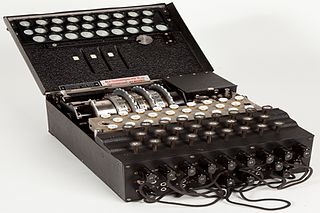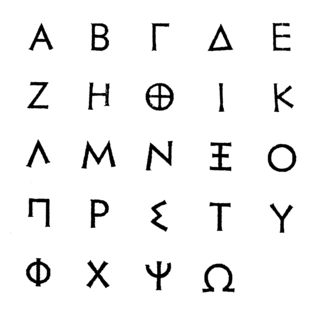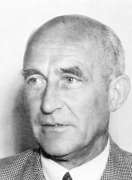Related Research Articles

The Enigma machine is a cipher device developed and used in the early- to mid-20th century to protect commercial, diplomatic, and military communication. It was employed extensively by Nazi Germany during World War II, in all branches of the German military. The Enigma machine was considered so secure that it was used to encipher the most top-secret messages.

A punched card is a piece of stiff paper that holds digital data represented by the presence or absence of holes in predefined positions. Punched cards were once common in data processing applications or to directly control automated machinery.

Ultra was the designation adopted by British military intelligence in June 1941 for wartime signals intelligence obtained by breaking high-level encrypted enemy radio and teleprinter communications at the Government Code and Cypher School (GC&CS) at Bletchley Park. Ultra eventually became the standard designation among the western Allies for all such intelligence. The name arose because the intelligence obtained was considered more important than that designated by the highest British security classification then used and so was regarded as being Ultra Secret. Several other cryptonyms had been used for such intelligence.

In the history of cryptography, the "System 97 Typewriter for European Characters" (九七式欧文印字機) or "Type B Cipher Machine", codenamed Purple by the United States, was an encryption machine used by the Japanese Foreign Office from February 1939 to the end of World War II. The machine was an electromechanical device that used stepping-switches to encrypt the most sensitive diplomatic traffic. All messages were written in the 26-letter English alphabet, which was commonly used for telegraphy. Any Japanese text had to be transliterated or coded. The 26-letters were separated using a plug board into two groups, of six and twenty letters respectively. The letters in the sixes group were scrambled using a 6 × 25 substitution table, while letters in the twenties group were more thoroughly scrambled using three successive 20 × 25 substitution tables.

The Polybius square, also known as the Polybius checkerboard, is a device invented by the ancient Greeks Cleoxenus and Democleitus, and made famous by the historian and scholar Polybius. The device is used for fractionating plaintext characters so that they can be represented by a smaller set of symbols, which is useful for telegraphy, steganography, and cryptography. The device was originally used for fire signalling, allowing for the coded transmission of any message, not just a finite amount of predetermined options as was the convention before.

The bombe was an electro-mechanical device used by British cryptologists to help decipher German Enigma-machine-encrypted secret messages during World War II. The US Navy and US Army later produced their own machines to the same functional specification, albeit engineered differently both from each other and from Polish and British bombes.

Room 40, also known as 40 O.B., was the cryptanalysis section of the British Admiralty during the First World War.

The Friden Flexowriter produced by the Friden Calculating Machine Company, was a teleprinter, a heavy-duty electric typewriter capable of being driven not only by a human typing, but also automatically by several methods, including direct attachment to a computer and by use of paper tape.

A keypunch is a device for precisely punching holes into stiff paper cards at specific locations as determined by keys struck by a human operator. Other devices included here for that same function include the gang punch, the pantograph punch, and the stamp. The term was also used for similar machines used by humans to transcribe data onto punched tape media.
Cryptanalysis of the Enigma ciphering system enabled the western Allies in World War II to read substantial amounts of Morse-coded radio communications of the Axis powers that had been enciphered using Enigma machines. This yielded military intelligence which, along with that from other decrypted Axis radio and teleprinter transmissions, was given the codename Ultra.
Peter Frank George Twinn was a British mathematician, Second World War codebreaker and entomologist. The first professional mathematician to be recruited to GC&CS. Head of ISK from 1943, the unit responsible for decrypting over 100,000 Abwehr communications.

In cryptography, Fialka (M-125) is the name of a Cold War-era Soviet cipher machine. A rotor machine, the device uses 10 rotors, each with 30 contacts along with mechanical pins to control stepping. It also makes use of a punched card mechanism. Fialka means "violet" in Russian. Information regarding the machine was quite scarce until c. 2005 because the device had been kept secret.
The B-Dienst, also called xB-Dienst, X-B-Dienst and χB-Dienst, was a Department of the German Naval Intelligence Service of the OKM, that dealt with the interception and recording, decoding and analysis of the enemy, in particular British radio communications before and during World War II. B-Dienst worked on cryptanalysis and deciphering (decrypting) of enemy and neutral states' message traffic and security control of Kriegsmarine key processes and machinery.
German code breaking in World War II achieved some notable successes cracking British naval ciphers until well into the fourth year of the war, using the extensive German radio intelligence operations during World War II. Cryptanalysis also suffered from a problem typical of the German armed forces of the time: numerous branches and institutions maintained their own cryptographic departments, working on their own without collaboration or sharing results or methods. This led to duplicated effort, to a fragmentation of potential, and to lower efficiency than might have been achieved. There was no central German cryptography agency comparable to Britain’s Government Code and Cypher School (GC&CS), based at Bletchley Park.

BATCO, short for Battle Code, is a hand-held, paper-based encryption system used at a low, front line level in the British Army. It was introduced along with the Clansman combat net radio in the early 1980s and was largely obsolete by 2010 due to the wide deployment of the secure Bowman radios. BATCO consists of a code, contained on a set of vocabulary cards, and cipher sheets for superencryption of the numeric code words. The cipher sheets, which are typically changed daily, also include an authentication table and a radio call sign protection system.
The Cipher Department of the High Command of the Wehrmacht was the Signal Intelligence Agency of the Supreme Command of the Armed Forces of the German Armed Forces before and during World War II. OKW/Chi, within the formal order of battle hierarchy OKW/WFsT/Ag WNV/Chi, dealt with the cryptanalysis and deciphering of enemy and neutral states' message traffic and security control of its own key processes and machinery, such as the rotor cipher machine ENIGMA machine. It was the successor to the former Chi bureau of the Reichswehr Ministry.

Wilhelm Tranow was a German cryptanalyst, who before and during World War II worked in the monitoring service of the German Navy and was responsible for breaking a number of encrypted radio communication systems, particularly the Naval Cypher, which was used by the British Admiralty for encrypting operational signals and the Naval Code for encrypting administrative signals. Tranow was considered one of the most important cryptanalysts of B-service. He was described as being experienced and energetic. Little was known about his personal life, when and where he was born, or where he died.
Otto Buggisch was a German mathematician who, during World War II, was a cryptanalyst working in the cipher bureau, the Cipher Department of the High Command of the Wehrmacht (OKW/Chi) responsible for deciphering of the opposing forces Communications. He also dealt with the security control of own key procedures. Through research and revelations exposed by two Polish officers, late in the war, he recognized the true cryptographic weaknesses of the Enigma rotor cipher, key machine used by the German armed forces to encrypt their secret communications, in World War II.
Ferdinand Voegele was a German philologist and linguistic cryptanalyst, before and during the time of World War II and who would eventually lead the cipher bureau of the Luftwaffe Signal Intelligence Service.
Morgan Cyprian McMahon O'Brien (1886–1968) was born in New Zealand to Irish parents, and was an engineer and inventor with numerous patents particularly in the area of high-street and bank security, alarm systems, and ciphers. He moved to England in 1925, and patented an advanced cipher typewriter in 1928 which has been referred to as "Britain's Enigma", and just before WW2 he patented the coding device known as the SYKO cipher device used throughout the war by the allied air forces, and to some extent by the allied navies too.
References
- ↑ Improvements in or related to Enciphering and Deciphering Machines, GB534625, Applied for 3 July 1939
- ↑ "A.O.U.100 R.A.A.F. Manual of Instructions for SYKO Machines" (PDF). Jerry Proc Webpage. Melbourne. November 1940. Retrieved 6 February 2021.
- ↑ The Battle of the Atlantic and Signals Intelligence: U–Boat Situations and Trends, 1941–1945, David Syrett, Routledge, April 2019, ISBN 9781911423683
- ↑ John Ferris (7 May 2007). Intelligence and Strategy: Selected Essays. Routledge. p. 143. ISBN 978-1-134-23335-9 . Retrieved 6 February 2021.
- ↑ Improvements in and relating to Means or Apparatus for Coding and De-coding Messages. GP Patent 320315, Application Date 4 April 1928
- ↑ Intelligence and Strategy: Selected Essays, John Robert Ferris, Routledge, 2005, ISBN 0415361958, 9780415361958
- ↑ Improvements in or relating to Machines for Enciphering and Deciphering Messages, GB Patent 453660. Applied for 3 April 1935
- ↑ Cipher Apparatus, US Patent 2270137, Applied for 11 May 1939
- ↑ ATC Log Extracts, Ronaldsway, Sep-Dec 1939, http://www.island-images.co.uk/ATC/zRon1930s/390902.html
- ↑ Admiralty Fleet Order - Flying Regulations for the Royal Navy. A.F.O. 917/44, 24th Feb 1944, p16
- ↑ BRITISH ADMIRALTY REPORTS of WORLD WAR 2 - HMS KHARTOUM - LOSS DUE TO DEFECTIVE TORPEDO AIR VESSEL, 23rd JUNE 1940, https://www.naval-history.net/xDKWDa-KhartoumLoss.htm
- ↑ 200 Squadron RAF, Record of Operations in SEAC Marc 1944 to April 1945, http://www.rquirk.com/200oper/200sqnseacrev2a.pdf